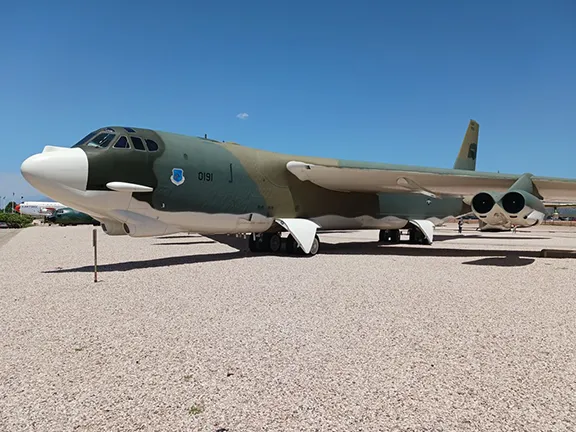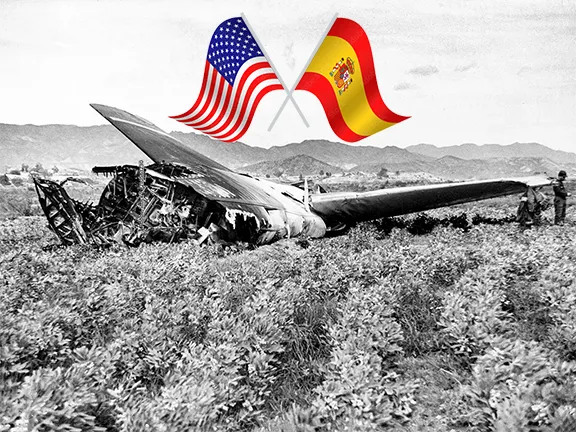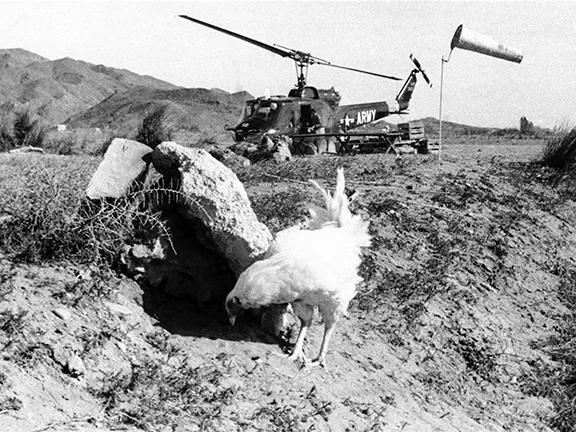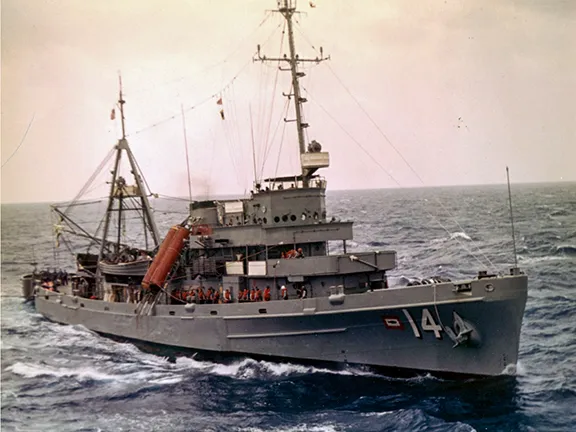The Palomares Incident
Cleaning up after the Palomares Incident
This last chapter looks at the aftermath of the Palomares Incident, a catastrophic nuclear accident from 1966. We discuss the ongoing efforts to clean up the contaminated ground surrounding the crash site, the health hazards faced by U.S. personnel involved in the cleanup, and the unresolved diplomatic tensions between Spain and the United States.
By Nick Nutter on 2023-07-24 | Last Updated 2025-05-20 | The Palomares Incident
This article has been visited 3,502 times

U.S. Service personnel Palomares 1966
Nearly sixty years after the Palomares Incident, one of the world's worst nuclear accidents, some of the ground surrounding the crash site is still contaminated.
Do you enjoy my articles? For your reading pleasure, this website does not carry third party ads. You could help me write more articles by buying me a cup of coffee.
Background
In January 1966, four hydrogen bombs carried by a United States B52-G Stratofortress bomber, hurtled to earth following a mid-air collision. Three of the bombs landed near the tiny hamlet of Palomares whilst the fourth landed in the sea.
The initiating explosives in two of the bombs exploded releasing material from the bomb's detonators. The radioactive contamination, americium that has a half-life of 432 years and plutonium 239 that has a half-life of 24,000 years spread across an estimated 2.5 square kilometres of farmland, causing immediate concerns for public health and the environment.
Over the following days and weeks, about 1,600 United States Air Force personnel were brought into the area to first gauge the scale of the problem and then clean up the area. 1966 was at the height of the Cold War. Washington's priority was to remove all evidence of the accident.


Palomares Beach 1966
About 1,400 tons of the worst contaminated soil was loaded into 6,000 barrels and shipped to the Savanna River plant in South Carolina where it was buried. About 17 hectares of land with less contamination was ploughed over to reduce the contamination per cubic metre and just before leaving Palomares, American troops dug two trenches near the cemetery where one of the bombs had been found. They infilled the trenches with about 2,000 cubic metres of contaminated earth, an action that was to have unforeseen consequences.
Contamination in 2004
And there the matter rested until 2004 when a study revealed that there was still significant contamination in some areas. In 2006 another study, conducted by Spain's energy research agency (CIEMAT) and the United States Department of Energy detected radiation in snails and other wild life indicating a source of underground radiation in up to 50,000 square metres of land. Two years later, in 2008, CIEMAT found the two trenches excavated near the cemetery. The Spanish government stepped in and expropriated some tracts of land to prevent agricultural or urban development. The owners of the 44 plots were paid 'rent' in compensation.
Statement of Intent 2015


U.S. Secretary of State John Kerry and Spanish Foreign Minister Jose Manuel Garcia Margallo
It was not until 2015 that Spain and the United States signed a statement of intent to dig up a patch of contaminated soil near Palomares and bury it in a secure area in the desert near Las Vegas in the U.S. state of Nevada. To date nothing has been done.
Diplomatic Relations
In the meantime, diplomatic relations between Spain and the United States worsened during Donald Trump's presidency.
It was only after Biden was elected president of the United States that the Spanish government led by Socialist Prime Minister Pedro Sanchez, felt they may have a chance at a resolution. In early 2023, the Spanish Foreign Ministry released the following statement: "The Ministry of Foreign Affairs has presented an official request to the United States asking it to retrieve the soil. So far, there has not been a response from the U.S." said a source at the Spanish Foreign Ministry, who declined to be named in accordance with custom.
Simo Orts - Paco el de la bomba
Maritime Law states that any person who locates a ship or cargo to be salved has a right to a salvage award, normally 1 or 2 per cent of the intrinsic value to the owner of the thing salved. The American Secretary of Defence put the value of each hydrogen bomb at $2 billion. 1% of that figure is $20 million.
After the Mediterranean Bomb was located, largely thanks to local fisherman Simo Orts noting the position of the bomb as it plunged into the sea, Orts appeared at the United States District Court for the Southern District of New York to make his claim for a salvage award. Simo's claim was settled out of court for an undisclosed sum. There is some dispute as to whether he ever received his money.
Health Hazards


To date (July 2023) there are no confirmed reports of death or illness amongst the local population as a result of the Palomares Incident.
The same cannot be said for the United States personnel drafted in to help with the cleanup in 1966. Marked long-term occurrences of cancer and other health defects occurred among the surviving USAF personnel directed to the accident site in the days following the crash to clean up the contamination. Most of the afflicted personnel have had difficulty securing any type of compensation from the Department of Veterans Affairs due to the secretive nature of the cleanup operation and the Air Force's refusal to acknowledge that adequate safety measures to protect first responders may not have been taken.
Today's Legacy


Parroquia de San Francisco Javier, Palomares
There is little evidence today of anything untoward having happened in Palomares. A couple of areas of land are still fenced off, adjacent to Calle las Bombardas (Bombardment street), and at the end of that road is a church, Parroquia de San Francisco Javier, built in 1985 with a tower that looks suspiciously to me like a B28FI Mod 2 Y1 hydrogen bomb on end.
References
1. US News Item March 2023
2. VOA News Item
3. Wikipedia - 1966 Palomares B-52 crash
4. CIEMAT Monitoring Report
Do you enjoy my articles? For your reading pleasure, this website does not carry third party ads. You could help me write more articles by buying me a cup of coffee.
 1: Chrome Dome
1: Chrome Dome 2: A Nuclear Wake-Up Call
2: A Nuclear Wake-Up Call 3: Diplomatic Relations
3: Diplomatic Relations 4: Operation Broken Arrow
4: Operation Broken Arrow 5: Mediterranean Bomb
5: Mediterranean Bomb